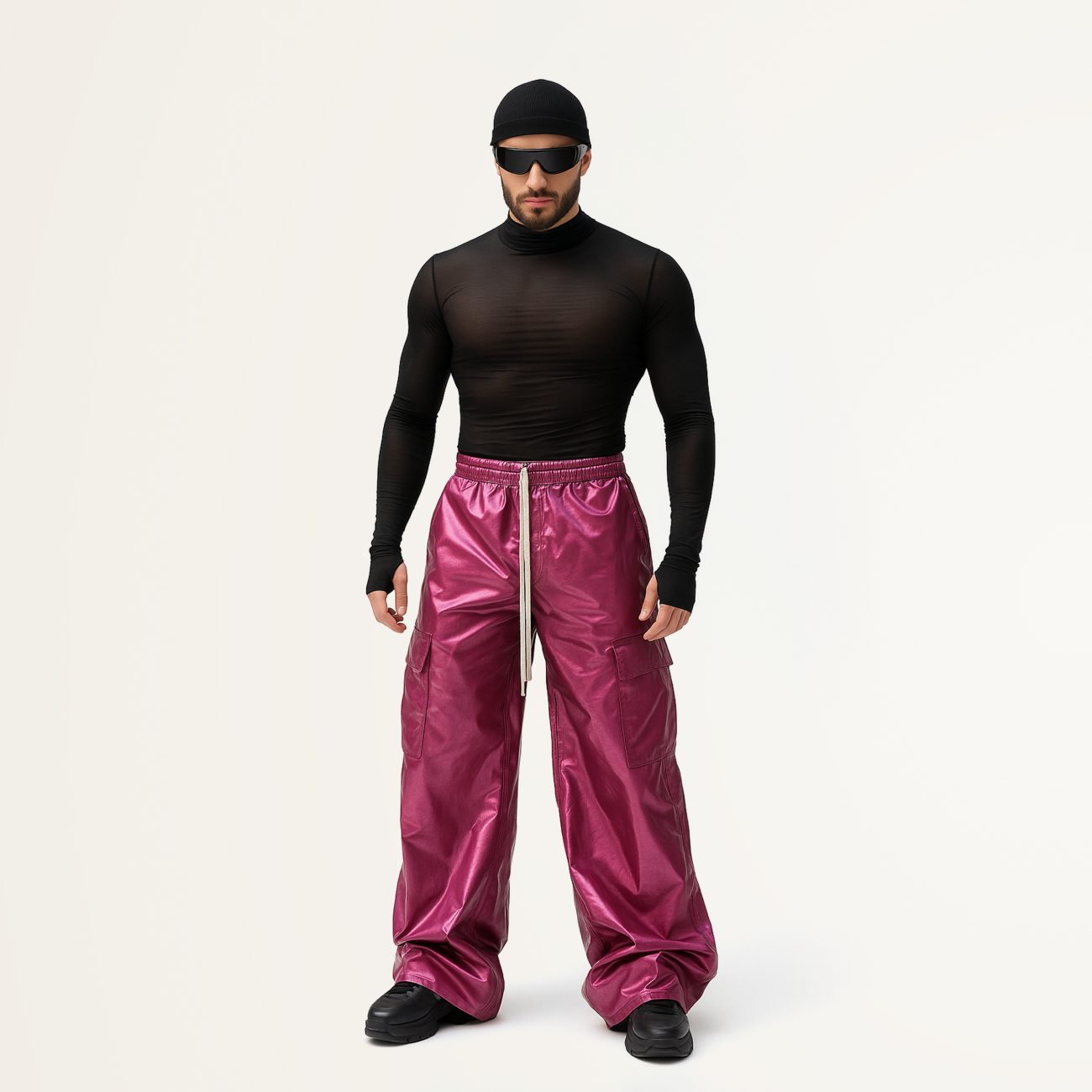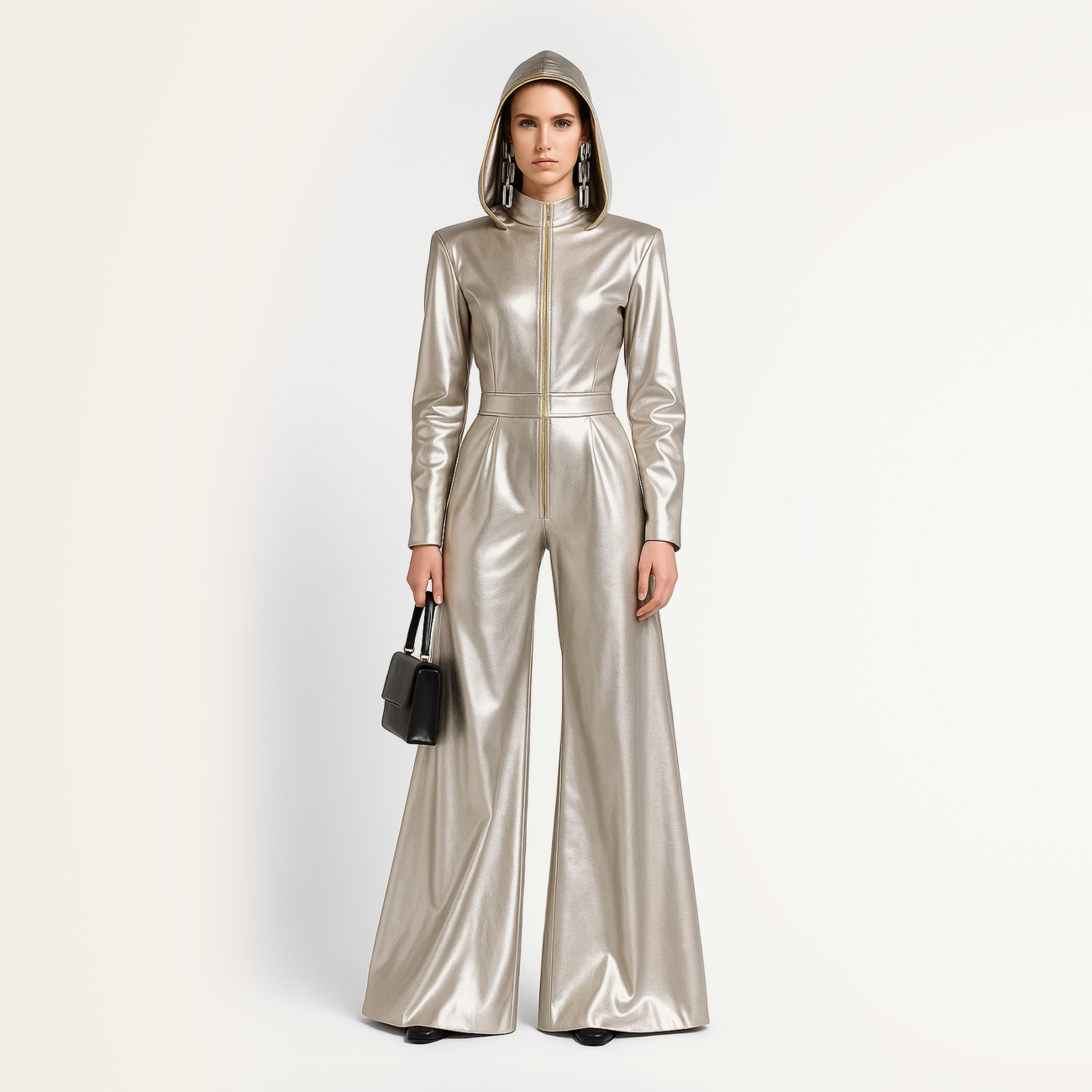Futurism
Futurism is a style that embodies a drive for innovation and technological advancement. It emerged as a response to the rapid development of industry and technology, reflecting the idea of moving toward the future and rejecting traditional notions of fashion. Futurism expresses a spirit of dynamism, boldness, adventurousness, and even utopianism. This style is not just about modern clothing — it is about the pursuit of a new aesthetic that blurs the lines between humans and high technology, drawing inspiration from space, robotics, and techno-industrial forms.
History
The history of futurism as a style began in the early 20th century with the eponymous art movement that originated in Italy and encompassed literature, painting, sculpture, and architecture. In 1909, Italian poet Filippo Tommaso Marinetti published the Manifesto of Futurism—a document that inspired an entire generation of artists and designers. The manifesto expressed admiration for speed, technology, machines, and industrialization. Marinetti and his followers rejected traditional art forms and celebrated courage and energy. They aimed to create something entirely new, groundbreaking, and unlike anything that had come before.
In the 1920s and 1930s, the influence of futurism in fashion was not particularly prominent, although ideas of functionality, comfort, and a desire for innovation began to infiltrate clothing design. The style evolved slowly, as global fashion remained closely tied to classical aesthetics. During this time, futurist concepts were more visible in architecture and industrial design, which in turn inspired future generations of fashion designers.
The true rise of futurism in fashion began in the 1960s with the advancement of the space industry and a growing public fascination with outer space. The space race was underway, and visions of the future became closely associated with space exploration. Designers such as Pierre Cardin and André Courrèges drew inspiration from this cosmic theme.
Pierre Cardin introduced silhouettes reminiscent of astronaut suits and helmets, using metallic fabrics and geometric lines. André Courrèges became famous for his “Moon Girl” collection of 1964, which featured mini dresses made from vinyl, white go-go boots, and accessories resembling space gear. Courrèges merged simplicity with technological flair, creating the image of a futuristic woman ready to conquer new worlds.
Paco Rabanne was also a pioneer of the style. His collections included “metal dresses” composed of chains, plates, and metallic discs, symbolizing the technological and industrial aesthetic of futurism. These designers infused fashion with elements of science fiction, turning clothing into a symbol of a utopian future.
In the 1970s, fashion futurism took on a techno-futuristic tone—designs became inspired not only by space but also by the rise of electronics and new technologies. Yohji Yamamoto and Issey Miyake began using synthetic materials that were completely new to the fashion industry. Plastic, nylon, rubber, and other innovative fabrics gained popularity, used to create garments that looked decidedly “unearthly.”
Thierry Mugler also played a significant role in popularizing futurism. His 1980s collections featured sharp shoulders, glossy finishes, and cybernetic elements, embodying the strength and dynamism of technology.
In the 1990s, the futurist style transformed, incorporating cyberpunk and urban themes. Fashion began to draw inspiration from computers, video games, and virtual worlds, resulting in looks that combined utility with complex silhouettes. Japanese cyberpunk, anime, and science fiction became particularly influential.
Designers experimented with shapes and silhouettes to express the fusion of man and machine. The style took on a darker tone, with an emphasis on deep colors and heavy textures. The aesthetics of films such as Blade Runner and The Matrix had a significant impact, inspiring visions of technological dystopias and the philosophy of the “future human.”
In the 21st century, futurism continues to evolve, now with a more conscious approach. Today’s designers are inspired by ideas of sustainability, eco-consciousness, and cutting-edge technologies, including digital fashion, biomaterials, and 3D printing. Designers like Iris van Herpen employ intricate technological processes and advanced materials to create garments that resemble works of art.
Modern collections often feature elements of augmented reality, virtual accessories, and digital clothing designed for wear in social media. Thus, contemporary futurism combines a vision of the aesthetic future with concerns about environmental sustainability and digital innovation.
Signature elements of the style
Color palette
Futurism often features metallic shades—silver, chrome, steel, graphite—as well as cool tones of blue, black, and white, symbolizing space and technology, along with iridescent and reflective hues.
Prints
Prints in futurism resemble high-tech aesthetics: geometric and abstract patterns, three-dimensional effects, digital and holographic motifs that create a sense of movement and depth. There are also biomechanical elements—lines mimicking wiring or cybernetic circuits.
Textures
The primary materials in futurism include metallic fabrics, vinyl, nylon, silicone, plastic, and glass-like textures. The style favors innovative synthetic materials that allow for unusual shapes and surface effects. Fabrics often have glossy or mirror-like finishes that reflect light, evoking a sense of sterility and perfection.
Cuts & silhouette
Futurist cuts are clean and geometric, often featuring sharp angles, minimalist lines, and exaggerated proportions. Asymmetry and unconventional shapes are welcomed—such as oversized shoulders, linear and angular silhouettes—that convey power and confidence.
Wardrobe essentials
- Metallic jumpsuits and dresses – featuring futuristic silhouettes and high-shine finishes.
- Asymmetrical jackets and blazers – with unconventional cuts, oversized collars, and sharp shoulders.
- Oversized glasses and accessories – goggles reminiscent of protective visors, and accessories made from metal, silicone, and plastic.
- Tops and shirts with 3D prints – incorporating digital or high-tech inspired designs.
- Platform boots and sneakers – footwear with chunky soles, neon lighting, or metallic inserts.
- Transparent raincoats and coats – made from plastic or vinyl, adding a sci-fi edge to the look.
Substyles
- Cyberpunk — incorporates more urban and dystopian elements, focusing on black, grey, and neon tones, as well as a mix of streetwear and tech-inspired design.
- Retro-futurism — blends futuristic shapes with elements of the past, often drawing inspiration from 1960s science fiction. It’s a style where “the future” is interpreted through the lens of vintage visions.
Email: support@belt-app.com


















